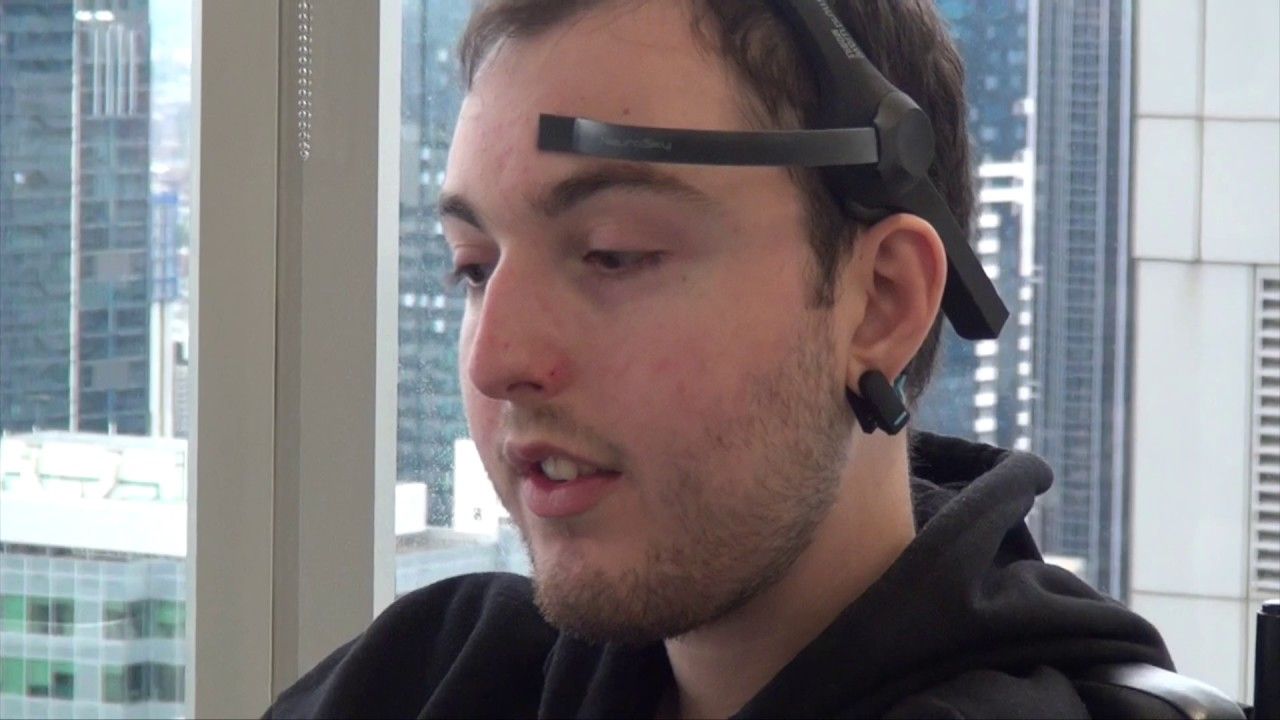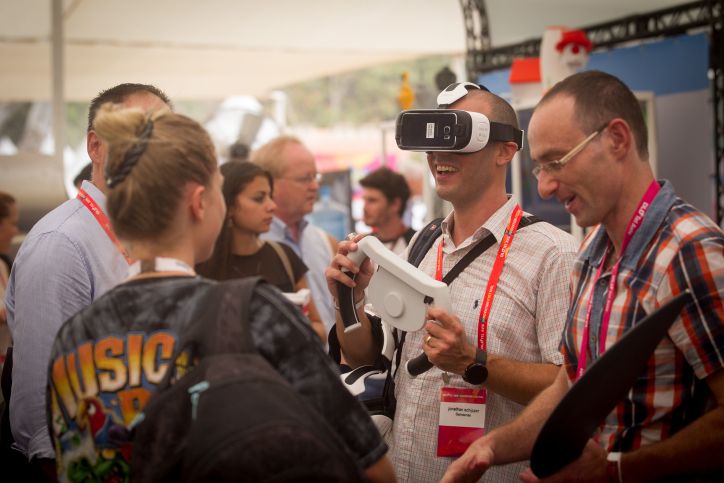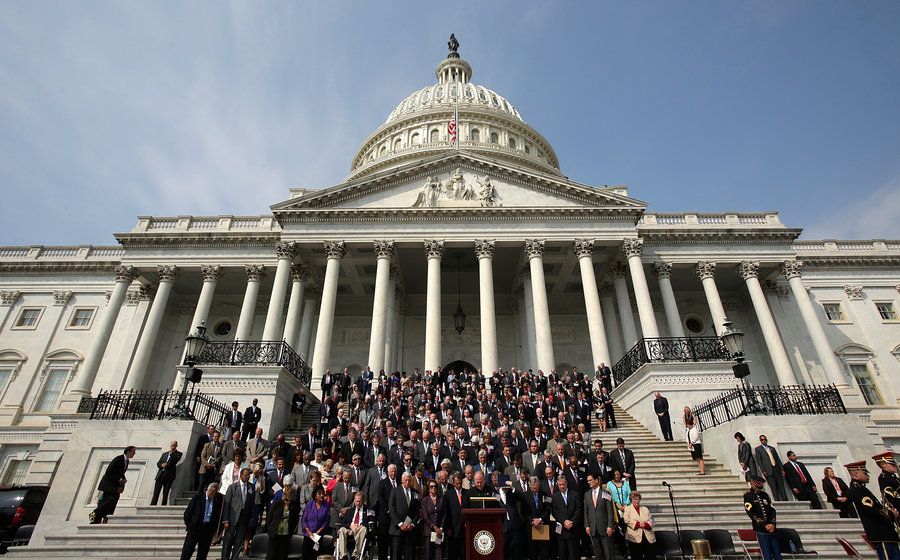Archive for the ‘education’ category: Page 167
Jan 29, 2017
Australian archaeological startup raises $679,000 to rebuild ancient sites in VR
Posted by Karen Hurst in categories: education, virtual reality
Luv this.
Archaeology isn’t an easy job, but it becomes easier in virtual reality, if you can walk around ancient buildings as if they were still there.
Lithodomos VR, an Australian virtual reality archaeological startup, knows this and has raised $900,000 in Australian dollars ($679,000 in U.S. dollars) in a seed funding round.
Jan 28, 2017
Enhancing STEM Learning Using Virtual Reality
Posted by Karen Hurst in categories: education, employment, engineering, virtual reality
By now, you’ve probably heard a lot about STEM education (science, technology, engineering, and mathematics). Careers in STEM are the next best thing: as a matter of fact, according to the U.S. Bureau of Labor, jobs in STEM will increase by up to 30 percent by 2022, a dramatic increase over the average industry projection of just 11 percent in the past years.
With that being said, it’s time to think more about using virtual reality in education; as education officials are seeing an increase in opportunity that will help bring STEM learning to life for today’s middle, and high school students.
By presenting a complete view of the world by use of virtual reality, teachers can help offer a new opportunity to students that will close some of the pedagogical gaps that have appeared off and on throughout the duration of the 21st-century classroom environment. These gaps generated from the fact that the curriculum and content in our education have not caught up with one another yet. In other words, education has not caught up with technology advancements.
Continue reading “Enhancing STEM Learning Using Virtual Reality” »
Jan 27, 2017
Chiral Quantum Optics: A New Research Field with Bright Perspectives
Posted by Karen Hurst in categories: education, quantum physics
Recently, surprising physical effects were observed using special microscopic waveguides for light. Such “photonic structures” currently are revolutionizing the fields of optics and photonics, and have opened up the new research area of “Chiral Quantum Optics”. Physicists from Copenhagen, Innsbruck, and Vienna, who are leading figures in this field, have now written an overview on the topic which just appeared in the scientific journal “Nature”.
What one learns at school is that light oscillates under a right angle (transversal) with respect to its direction of propagation. Among experts, however, it was already known that light behaves differently when it is confined strongly in the transversal plane using so-called “photonic structures”. In particular, this is the case for special ultra-thin glass fibers which have a diameter of only a few hundred nanometers (one nanometer is a millionth part of a millimeter) and which are thereby smaller than the wavelength of light. Also waveguides based on so-called “photonic crystals” (two-dimensional structures with periodically arranged holes) can confine light in this way.
In this situation, the light also oscillates along its propagation direction (longitudinal). The combination of transversal and longitudinal oscillation leads to a rotating electric field which physicist call circular polarization. Without the spatial confinement, the electric field associated with circularly polarized light behaves like the propeller of an aircraft whose axis is parallel to the direction of propagation. “However, in narrow photonic waveguides, the electric field of the light resembles the rotor of a helicopter,” explains Arno Rauschenbeutel from the Vienna Center for Quantum Science and Technology at the Institute of Atomic and Subatomic Physics of TU Wien, Austria. Here, the spin of the light points along the axis of the rotor and is therefore oriented perpendicular to the propagation direction of the light.
Continue reading “Chiral Quantum Optics: A New Research Field with Bright Perspectives” »
Here’s a Harpers review on a new book about #transhumanism coming out soon that discusses the movement, including some of my work. I saw this review in the print edition today (150,000 copies hitting the stands today and 2nd oldest mag in America).
George Saunders is the most humane American writer working today. He need not ask, as Sheila Heti did in the title of her novel, how a person should be. He knows. A person should be courageous and hopeful, generous and kind. A person should sacrifice herself for the good of those who are more vulnerable. A person should live in the knowledge that life is suffering, and that the most, or least, she can do is attempt to ameliorate the suffering of others. And — this is where it gets interesting — a story should be as compassionate as a person. “A story’s positive virtues are not different from the positive virtues of its writer,” Saunders noted in an essay called “My Writing Education.” “A story should be honest, direct, loving, restrained.”
Jan 16, 2017
What’s the future of education? Teachers respond
Posted by Shane Hinshaw in categories: education, mathematics
What’s the future of education? How will students learn differently? What will the schools of the future look like? We asked TED-Ed Innovative Educators to share their ideas. Their answers are provocative, contradictory — and make for great conversation starters. Welcome to the “Choose Your Own Adventure” future of learning.
There will be more creativity in education. “Because that’s what careers will require. Education will be not just taking in information and sharing it back, but also figuring out what to do with that information in the real world.” —Josefino Rivera, Jr., educator in Buenos Aires, Argentina.
The classroom will be one big makerspace. “Technology like Evernote, Google, and Siri will be standard and will change what teachers value and test for. Basically, if you can ask Siri to answer a question, then you will not be evaluated on that. Instead, learning will be project based. Students will be evaluated on critical-thinking and problem-solving skills. Literature and math will still be taught, but they will be taught differently. Math will be taught as a way of learning how to solve problems and puzzles. In literature, students will be asked what a story means to them. Instead of taking tests, students will show learning through creative projects. The role of teachers will be to guide students in the areas where they need guidance as innovators. How do you get kids to be innovative? You let them. You get out of their way.” —Nicholas Provenzano, educator in Michigan, United States.
Continue reading “What’s the future of education? Teachers respond” »
Jan 16, 2017
Teleport Brain Control
Posted by Karen Hurst in categories: education, internet, mobile phones, robotics/AI

Teleport is a telepresence robot that can be used by people with a disability to attend school or work remotely. It can be controlled using an internet browser, Android phone, and now brain control.
Jan 15, 2017
Israel to hire foreign hi-tech workers to stave off manpower drought
Posted by Karen Hurst in category: education
Six-year program aims to boost the number of higher education students by 40%, encourage women, Arabs, and ultra-Orthodox to enter sector.
Jan 14, 2017
Why a New Group Aims to Elect More Scientists to the Government
Posted by Shane Hinshaw in categories: climatology, education, government, mathematics, sustainability
Concerned that scientific views are not being properly represented in Washington, a new nonprofit group wants to get more scientists elected. 314 Action, named after the first three digits of pi, wants scientists to embrace the political process, running for all levels of government. The group’s aim is to get as many scientists elected as possible in the 2018 elections.
314 Action sees particular urgency for its work due to the rise of anti-science rhetoric on the Hill, especially from the right. The current Republican standard bearer President Trump has questioned the idea that climate change is caused by humans and seemingly encouraged debunked anti-vaccination opinions. With the appointments Trump made so far, it’s hard to believe his administration will advance scientific causes.
The 314 Action group describes its members as people who come from the STEM community whose goals are to increase communication between STEM community and elected officials, to actually elect STEM-trained candidates to public office, to increase presence of STEM ideas through the media, and to prevent the U.S. from falling further and further behind the rest of the world in math and science education.
Continue reading “Why a New Group Aims to Elect More Scientists to the Government” »
Jan 13, 2017
Forget What You Learned in High School
Posted by Shane Hinshaw in categories: chemistry, education
It’s the stuff of Chemistry 101: carbon can only form four bonds because it only has four shareable electrons.
But this rule no longer applies, because scientists have confirmed the existence of an exotic carbon molecule that can form six bonds, meaning the most classic example of tetravalence in our high school chemistry textbooks now comes with a hefty caveat.
If all of this is kinda giving you conniptions, we’re right there with you.















